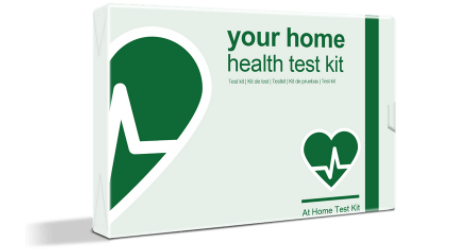Intolerance Types Science
Use the links below to view the different intolerance types:
WHEAT INTOLERANCE
Gluten-related disorders are activated on ingestion of gluten-containing grains by individuals with a genetic or immunologic predisposition to these conditions. In terms of reactions to wheat and gluten, we need to distinguish between food intolerance, food sensitivity, celiac disease, and non-celiac-gluten-sensitivity (NCGS):
•Food Intolerance – Gastrointestinal symptoms secondary to fermentation of sugars by the colonic microbiota(1)
•Food Sensitivity – An immune response to nutrient-derived antigens that causes gastrointestinal and extra-gastrointestinal symptoms(1)
•Celiac disease – Is an autoimmune enteropathy triggered by exposure to gluten proteins, leading to intestinal inflammation and villous atrophy in genetically predisposed individuals(2)
•NCGS – (Non-celiac gluten sensitivity) is characterised by intestinal or extraintestinal symptoms, following ingestion of gluten-containing grains, that resolve upon elimination of these grains from the diet(1)
The science
The mechanism of celiac disorder is associated with robust B cell and antibody responses to gluten and the transglutaminase 2 autoantigen(3). Nonceliac gluten sensitivity (NCGS) is a poorly understood clinical entity defined by an onset of symptoms in response to the ingestion of gluten-containing food. There are no established biomarkers yet for NCGS, but recent studies reveal a state of systemic immune activation in conjunction with a compromised intestinal epithelium in people with wheat sensitivity NCGS (4,5).
Recently Uhde et al.(2) showed that the anti-gluten IgG antibody in NCGS is significantly different from Celiac disease in subclass distribution and its relationship to intestinal cell damage. It has been suggested that IgG2 and IgG4 are part of the immunologic memory toward harmless and recurring antigens; an Sensitivity Test Plus immune response stimulated by a more extensive antigen exposure (2,6), while IgG3 subclass is associated with the autoimmune response and intestinal cell turnover in celiac disease(2).
Soon, these components of the immune response to gluten are expected to provide additional biomarkers that may be essential to get valuable information in the context of disease mechanisms, prognoses, and responses to therapy.
Symptoms
Wheat intolerance: Symptoms are exclusively gastrointestinal and mostly secondary to sugar fermentation by the intestinal microbiota, leading to a production of gas that causes abdominal distention, abdominal pain, and irregular bowel movements.
Wheat sensitivity: Sensitivities are immune-mediated reactions to some nutrients; these reactions (intestinal and extraintestinal) do not always occur in the same way when people ingest that particular nutrient. NCGS is an example of food sensitivity. Extraintestinal symptoms include headaches or migraines, foggy mind, chronic fatigue, joint and muscle pain, tingling of the extremities, leg or arm numbness, eczema, anaemia(7,8)
Tests available:
Here a Allergy Test we provide IgG4 testing to check your wheat sensitivity non-celiac gluten sensitivity. Using our Allergy & Intolerance Test Plus, you can check your wheat sensitivity by looking for the production of IgG4 antibodies, which are a marker for the detection of NCGS. Using our tests, you will be able to detect intolerances or sensitivities and start your journey to find a healthier version of yourself. Our tests can only be used to detect wheat sensitivity and allergies (IgE) and not to test for celiac disease. If you are interested in a test for celiac disease, please consult your GP.
Alternative Foods and Management:
The management of a wheat sensitivity (NCGS) consists of eliminating gluten from the diet and consuming gluten-free foods. It was observed that after the elimination of gluten in the diet, patients stop experiencing the symptoms, but the eventual reintroduction of gluten in the diet can reinstate the symptoms. It is suggested to follow an elimination diet followed by a reintroduction diet. Starting the reintroduction of gluten in small amounts could help the patient better understand the amount of gluten that can be tolerated, without eliminating any essential nutrients from the diet. It can be observed that the same treatment is used in the case of celiac disease, but it is vital to highlight the fact that in the case of celiac disease the gluten must be avoided entirely and never reintroduced in the diet, and that NCGS and celiac disease are two different disorders (celiac disease and autoimmune disorder and NCGS a sensitivity)
References:
MILK INTOLERANCE
Milk intolerance is a broad and generic term that includes the more specific maladies of lactose intolerance, cow’s milk protein intolerance (CMPI), and cow’s milk protein allergy (CMPA).
• Cow’s milk proteins allergy (CMPA) is when the immune system reacts to proteins in milk. It is the most common childhood allergy, affecting between two per cent and seven per cent of babies.
•Lactose intolerance (LI) is when there is difficulty digesting lactose, which is the natural sugar found in milk. It can last for about four weeks before the gut recovers and starts to break down lactose again.
•Cow’s milk protein intolerance (CMPI) is not immune-mediated. They are more common in adulthood than in childhood.
The science
CMPA: The immunological mechanism that leads to cow’s milk protein allergy development is not completely clear. Two mechanisms contribute to this disease’s pathogenesis, referring to IgE-mediated and non-IgE-mediated reactions (1). IgE-mediated responses are based on immunological mechanisms that are better identified than non-IgE-mediated ones. Symptoms rapidly evolve (after several minutes to several hours following the contact with the allergen); this kind of mechanism is called ‘immediate hypersensitivity’. IgE-mediated CMPA is characterised by two stages “sensibilization” and “activation”. The first, sensibilization develops when the immune system is programmed abnormally so that IgE antibodies against cow milk proteins are secreted (2). These antibodies bind the surface of mast cells. The following exposure to milk proteins triggers the activation phase when IgE associated with mast cells bind allergenic epitopes sited on milk proteins and unleash a rapid release of inflammatory mediators responsible for the allergic reaction. The allergens are ingested, processed, and expressed by antigens presenting cells (APC) (1,2).
CMPI: These reactions are characterised by a delayed set up, associated with symptoms after one hour or many days after the ingestion of cow’s milk proteins. These reactions are classified as “delayed hypersensitivity”. It is essential to highlight that both the IgE-mediated and non-IgE-mediated reactions described are not mutually exclusive, and both can act in the same disease through different pathways (3). The pathogenesis of non-IgE mediated reactions are based on other theories: reactions mediated by Th1 cells, interactions between T lymphocytes, mast cells and neurons that alters the function of the smooth muscle and the intestinal motility (4). It was observed that the non-IgE-mediated reactions are more common in adulthood than in childhood as observed by Zuberbier et al. were they found a direct relationship between the incidence of non-IgE-mediated reactions and age (5).
LI: Lactose intolerance is a result of lactase deficiency and is a form of carbohydrate malabsorption. Lactose is hydrolysed by lactase in the intestinal mucosa, with glucose and galactose production as by-products (6) When lactase is absent or deficient, hydrolysis of the sugar lactose is incomplete. Because it is osmotically active, the undigested sugar will pull fluid into the intestine. The combined osmotic effect of the undigested sugar and organic acids results in the passage of acidic diarrheal stools. These stools can produce significant skin irritation and breakdown (7). Lactose intolerance can lead to dehydration, electrolyte abnormalities, and failure to thrive (6).
Symptoms:
CMPA/CMPI: The most common cutaneous reactions are: urticaria, atopic dermatitis, angioedema, and contact rashes (8,9,10,11). Infants with gastrointestinal reactions can present with nausea, vomiting (including hematemesis), colic, diarrhoea, enterocolitis, colitis, constipation, and transient enteropathies (8,9,10,11). Respiratory reactions include asthma, wheezing, laryngeal oedema, otitis media, and anaphylaxis (10,11).
LI: The most common reactions are gastrointestinal reactions with nausea, vomiting, diarrhoea, and colitis.
Tests available:
We have IgE and IgG4 tests to check your IgE-mediated and non-IgE-mediated reactions to cow’s milk proteins. We are testing for casein protein, one of the most common proteins involved in milk allergy/intolerance. Using our comprehensive Allergy & Intolerance Test Plus you will be able to check and confirm the presence of an IgE mediated or non-IgE-mediated reactions.
Alternative Foods and Management:
CMPA/CMPI: If CMA/CMI is suspected, most health care providers will remove cow’s milk entirely from the diet for a period. The patient will be observed for a reduction in symptoms, and cow’s milk will be carefully reintroduced. If symptoms reappear after reintroduction of cow’s milk, it is highly suspicious of CMA. In the case of CMI (non-IgE-mediated delayed symptoms), the use of milk with lower A1 Beta Casein could be a way to keep milk in the diet. Milk from sheep, goat and camel is naturally low in A1 Beta Casein and high in A2 Beta Casein. See Lactose Intolerant in Adulthood for more information.
LI: Elimination of food containing lactose is suggesting using lactose-free alternatives widely available in supermarkets.
References:
DAIRY INTOLERANCE
Digestive discomfort after dairy product consumption is frequently attributed to lactose. Lactose Malabsorption (LM) affects 65% of adults worldwide, limiting their lactose digestion capacity due to insufficient lactase production (1,2).
The science
Recent interest from the scientific community is focused on the potential digestive impact of dairy proteins, particularly β-casein. Bovine β-casein exists in 2 predominant types: A1 or A2 (3). A single amino acid polymorphism of A1 β-casein results in greater liberation of the peptide beta-casomorphin 7 (BCM7) during digestion (4). Studies on rodents have decreased gastrointestinal motility, resulting in increased transit time fed with A1 β-casein(5). A1 β-casein has also resulted in increased intestinal fluid inflammatory marker concentrations, and intestinal leukocyte infiltration, suggesting gastrointestinal inflammatory mechanisms (6).
Clinical studies, shown that the consumption of milk containing exclusively A2 β-casein, compared with milk containing A1 β-casein, resulted in softer stools (7) and improved digestive comfort (8,9). These improved digestive symptoms provided by milk containing exclusively A2 β-casein might be more significant in lactose malabsorbers (8,9), or those with self-described milk intolerance (4).
Symptoms:
Symptoms include rapid bacterial fermentation (10) contributing to variable degrees of digestive discomfort (11) which can manifest as a variety of symptoms over several hours (12). The severity of symptoms varies among malabsorbers (13) and can be modifiable.
Tests available
We offer IgG4 tests to check your non-IgE-mediated reactions to cow’s milk protein. We test for casein protein, one of the most known proteins involved in Lactose malabsorption and Dairy intolerance. Using our comprehensive Allergy & Intolerance Test you will be able to check and confirm the presence of non-IgE-mediated reactions. Using our tests, you will be able to speed up the detection of intolerances and start your journey to find a better/healthier version of yourself.
Alternative Foods and Management:
Casein is frequently added to processed foods, so even if you avoid drinking milk, you can remain exposed to the protein. The type of casein involved with the dairy intolerance is associated with the A1 Beta Casein protein. Scientific studies support that most people with self-diagnosed lactose intolerant are not intolerant to lactose but A1 Beta Casein protein. In this case, it could be beneficial to introduce milk and milk products that are low in A1 Beta Casein and high in A2 Beta Casein. Commercially available A2 milk could be one solution. Naturally low in A1 Beta Casein and high in A2 Beta Casein is milk from goat, sheep, and camel. This offers people the possibility to try the introduction of A2 milk in their diet, starting with small amounts to check if they can improve their symptoms. The fact that symptoms are different in people and that maybe this is not the solution for everybody.
References:
EGG INTOLERANCE
Egg allergy is one of the most common food allergies in infants and young children (1). Global data indicate that egg allergy affects 0.5–2.5% of young children (1).
Egg allergy is an immunologically mediated adverse reaction to egg induced by egg protein which includes IgE‐mediated allergy (immediate reaction) and non‐IgE‐mediated allergy (delayed reaction).
The science
The five significant allergens identified in hens’ eggs are ovomucoid (Gal d1), ovalbumin (Gal d2), ovotransferrin (Gal d 3), lysozyme (Gal d4) and albumin (Gal d5). The majority of allergenic proteins are contained in egg white (Gal d 1–4) rather than in egg yolk (Gal d5). Gal d1 is resistant to heat and digestive enzyme degeneration, so it is the most allergenic protein, whereas Gal d2 is the most abundant protein (2,3). A majority of patients with an egg allergy will develop egg tolerance, 68% by the age 16 years except for patients with an egg IgE greater than 50 kU/L, who are unlikely to develop egg tolerance (4).
Non-IgE mediated egg allergy observed in several complex atopic disorders includes Atopic Dermatitis(5), Eosinophilic oesophagitis (7), and Food protein‐induced enterocolitis syndrome (8). Lever et al. (6) reported an improvement in Atopic Dermatitis following egg elimination, particularly in those subjects with pre‐existing IgE sensitisation to egg.
Egg allergy is one of the most common allergies in childhood and has a wide spectrum of clinical presentation, including anaphylaxis. Individuals may react to egg in all forms or tolerate it in various cooked forms (e.g., in baked products). Current research points to a role for oral immunotherapy in the future (SLIT Sublingual immunotherapy) (9).
Symptoms
Stomach pain, bloating, cramps, diarrhoea, nausea, vomit. Egg intolerance symptoms also include eczema or acne, fatigue, swollen joints, runny nose.
Tests available:
Here a Allergy Test we have IgE and IgG4 testing to check your IgE-mediated and non-IgE-mediated reactions to egg white and egg yolk. Using our comprehensive Allergy & Intolerance Test Plus you will be able to check and confirm the presence of an IgE mediated or non-IgE-mediated reactions. Using our tests, you will be able to speed up the process to detect allergy and intolerances and start your journey to find a better/healthier version of yourself.
Alternative Foods and Management:
The majority of egg-intolerant people tend to be okay with the egg yolk, but it’s the egg white, or albumen, that their bodies react with. While an egg allergy involves a chemical reaction in the body, an egg intolerance typically means that a person cannot properly process and absorb the egg whites (or egg yolks). It is reported that cooked or baked egg can be in some cases tolerated. The introduction of cooked egg in the diet could be used starting with small amounts. The reintroduction of small quantities of triggered food could help you better understand how the particular item affects your health and how you could use food to manage your symptoms.
References:
3) Cooke SK, Sampson HA: Allergenic properties of ovomucoid in man. J Immunol 1997, 15;159(4):2026-32.


